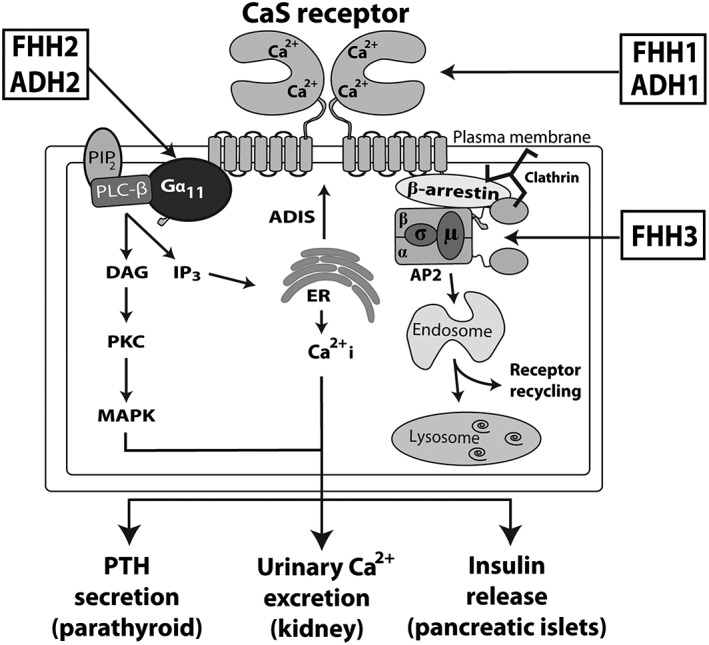Figure 1.

Overview of calcium‐sensing receptor signalling and trafficking. The binding of calcium (Ca2+) to the CaS receptor extracellular domain leads to Gα11‐dependent activation of PLC‐β and the production of DAG and inositol 1,4,5‐trisphosphate (IP3) from membrane‐bound phosphatidylinositol 4,5‐bisphosphate (PIP2). The increase in intracellular IP3 levels facilitates the release of Ca2+ from intracellular stores such as the ER. DAG activates PKC and the MAPK pathway. These signalling events lead to a decrease in PTH secretion and reduction in renal tubular calcium reabsorption and also enhance insulin release from pancreatic islets. CaS receptor cell‐surface expression is regulated by ADIS (Grant et al., 2011) and also by an endocytic complex comprising clathrin, β‐arrestin and the AP2 complex, which may traffic this GPCR to the endosomal–lysosomal degradation pathway or recycle the CaS receptor back to the cell surface (Breitwieser, 2014). Loss‐ and gain‐of function mutations of the CaS receptor lead to FHH1 and ADH1, respectively; loss‐ and gain‐of function mutations of the Gα11 subunit are associated with FHH2 and ADH2, respectively; and loss‐of‐function mutations of the AP2σ lead to FHH3.
